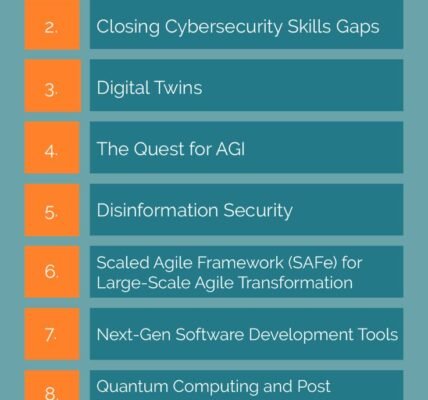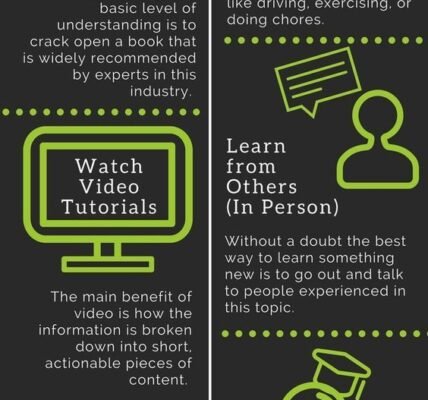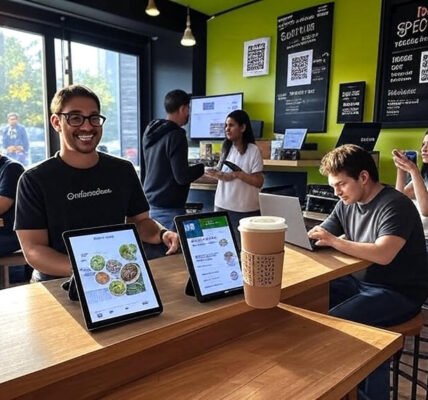Education is undergoing a dramatic transformation as technology, evolving societal needs, and new learning theories drive innovation. The future of education is increasingly focused on personalization, accessibility, and the integration of advanced technologies. In 2025, educators and students will benefit from innovative approaches that cater to diverse learning styles, improve engagement, and prepare learners for the challenges of the modern world. This article explores the key trends shaping the future of education, offering insights into how the educational landscape is evolving to meet the needs of today’s learners.
Key Innovations Shaping the Future of Education
The future of education will be defined by flexibility, interactivity, and data-driven approaches. Let’s explore the top trends and technologies that are revolutionizing how we learn and teach.
1. Personalized Learning Powered by AI
One of the most promising innovations in education is the use of artificial intelligence (AI) to create personalized learning experiences. In 2025, AI will play an integral role in understanding each student’s strengths, weaknesses, and learning pace. AI-driven platforms can adapt content to meet individual needs, allowing learners to progress at their own speed, providing customized challenges, and offering real-time feedback.
- Key Benefits: Customized learning paths, improved engagement, faster skill acquisition.
- Current Developments: Tools like DreamBox and Squirrel AI are using machine learning to create adaptive learning environments that personalize lessons based on individual performance.
- How NewsCompile Helps: We provide expert insights on how AI tools are transforming education and discuss the best AI-powered platforms that offer tailored learning experiences.
2. Hybrid and Blended Learning Models
The COVID-19 pandemic accelerated the adoption of hybrid and blended learning models, and these are expected to remain integral to the education system moving forward. By 2025, hybrid learning—combining in-person and online instruction—will be the norm. This model offers students greater flexibility and allows them to engage with educational content in multiple formats.
- Key Benefits: Greater flexibility, improved access to education, better learner engagement.
- Current Developments: Universities and schools are investing in hybrid learning tools like Zoom, Microsoft Teams, and Google Classroom, which enable seamless integration of remote learning alongside traditional classroom settings.
- How NewsCompile Helps: We examine how blended learning platforms are evolving and offer tips on how educators can effectively implement hybrid learning models in their classrooms.
3. Project-Based and Experiential Learning
Project-based learning (PBL) and experiential learning are gaining popularity as students seek more hands-on, real-world applications of their studies. These approaches foster critical thinking, problem-solving, and collaboration by allowing students to work on projects that solve actual challenges, often in partnership with businesses or communities.
- Key Benefits: Increased engagement, better preparation for real-world challenges, development of critical skills.
- Current Developments: In 2025, PBL and experiential learning will be more deeply integrated into curriculums, with schools and universities collaborating with industries to provide students with real-world problem-solving opportunities.
- How NewsCompile Helps: We showcase how project-based learning can be implemented in various subjects and industries and highlight successful examples of experiential learning in education.
4. Lifelong Learning and Microcredentials
As the job market continues to evolve, there’s a growing emphasis on lifelong learning. In 2025, learners will increasingly turn to microcredentials and short, targeted courses that allow them to quickly acquire specific skills. These credentials will be more widely recognized by employers as proof of competency, offering professionals the flexibility to upskill and reskill as needed.
- Key Benefits: Faster skill acquisition, improved employability, flexible learning.
- Current Developments: Online platforms like Coursera, edX, and LinkedIn Learning are leading the charge in providing accessible, affordable microcredentials that can be earned at any stage of a person’s career.
- How NewsCompile Helps: We explore the growing role of microcredentials and discuss how both individuals and institutions can leverage these flexible learning options for career advancement.
5. Collaborative Learning with Technology
Collaboration is essential in today’s educational environment, and technology is playing a significant role in making collaborative learning more interactive and engaging. In 2025, digital tools will make it easier for students to work together on projects, share resources, and provide feedback in real-time, regardless of their location.
- Key Benefits: Enhanced communication, improved teamwork skills, greater resource sharing.
- Current Developments: Apps like Slack, Miro, and Trello are being used to facilitate collaboration in the classroom, enabling students to work together seamlessly in virtual environments.
- How NewsCompile Helps: We examine the best collaborative tools and strategies for fostering teamwork in educational settings, ensuring that students develop the skills necessary to succeed in a global, digital workforce.
6. Gamification in Education
Gamification, the integration of game mechanics into educational content, is gaining traction as a tool to enhance student motivation and engagement. In 2025, more schools and universities will adopt gamified learning platforms to make lessons more interactive and enjoyable. This approach helps students to remain engaged and motivated by providing rewards, challenges, and a sense of progression.
- Key Benefits: Increased engagement, improved motivation, enhanced learning experience.
- Current Developments: Platforms like Kahoot!, Classcraft, and Duolingo have successfully incorporated gamification into their systems, making learning more enjoyable and encouraging students to achieve their goals.
- How NewsCompile Helps: We review the top gamified learning platforms and explore how educators can use game mechanics to make learning more exciting and effective.
7. Focus on Social-Emotional Learning (SEL)
As the demands on students continue to rise, there’s a growing recognition of the importance of social-emotional learning (SEL). SEL programs focus on helping students develop self-awareness, self-regulation, empathy, and relationship skills, which are essential for academic success and personal well-being.
- Key Benefits: Improved emotional intelligence, better mental health, enhanced interpersonal skills.
- Current Developments: Many schools and universities are incorporating SEL programs into their curriculums, recognizing its impact on student performance and well-being. SEL tools and resources, such as CASEL, are being integrated to support these efforts.
- How NewsCompile Helps: We explore the latest trends in SEL education and discuss how schools and educators can implement SEL programs effectively to support students’ emotional growth.
8. Sustainability and Green Education
The need for environmental awareness and sustainable practices is more pressing than ever. By 2025, sustainability will be a core component of education, with institutions focusing on teaching students about environmental issues, renewable energy, and sustainable practices. Schools will also work to reduce their environmental impact by adopting green technologies and sustainable building practices.
- Key Benefits: Increased environmental awareness, responsible global citizens, sustainable practices.
- Current Developments: Many educational institutions are incorporating sustainability into their curriculums and adopting green initiatives, such as zero-waste campuses and solar-powered facilities.
- How NewsCompile Helps: We examine how sustainability is being integrated into education and offer practical tips for educators looking to teach environmental stewardship and sustainable practices.
Conclusion
The future of education is rapidly evolving, driven by technological advancements, a focus on personalized learning, and the growing need for students to develop both technical and soft skills. From AI-powered learning platforms and gamification to project-based learning and sustainability, the educational landscape in 2025 is being shaped by innovative approaches that cater to the diverse needs of modern learners. As we move forward, these trends will continue to reshape how students engage with their education, ensuring they are better prepared for the challenges and opportunities of the future. At NewsCompile, we keep you updated on the latest developments in education, providing valuable insights to help educators, students, and institutions thrive in this exciting new era.




